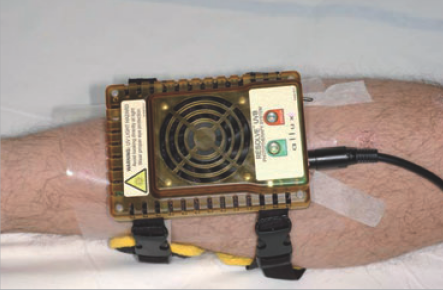Application of UV-LED in the treatment of psoriasis and other skin diseases
Ultraviolet has been used in the treatment of psoriasis and other skin diseases for more than half a century. UVA and UVB are mainly used in clinic. Uvb-304 is a special type of UVB, which can be used to treat psoriasis. In the 1980s, researchers found that a kind of UVB with wavelength of 311-313 nm can be particularly effective in the treatment of psoriasis. Later, it was called narrow-band ultraviolet B (NB-UVB). NB-UVB has achieved good curative effect in the treatment of psoriasis, and has become one of the most effective, simplest and safest treatment methods for psoriasis.

UVB light source was originally used to cover the whole spectrum of psoriasis. Studies have shown that 304 nm to 313 nm is the most effective wavelength range for the treatment of psoriasis, and the ultraviolet light with the emission wavelength of 290 nm to 300 nm has no therapeutic effect, but will cause sunburn reaction. These findings make the research of narrow-band UVB light source (the peak value is 311 ± 2 nm) more and more important.
UVB phototherapy system developed by American allux medical company uses UV-LED technology to generate local UVB radiation, which directly irradiates psoriasis plaque. The therapeutic instrument consists of two different modules: the patient connection module (PAU) providing therapeutic radiation and the power module providing medical grade DC power. The size of Pau is 128x90x38 mm. The therapeutic ray in the Pau module is realized by a module light source. The light source is composed of 72 UV-LEDs and 9x8 hexagonal array. The UV-B radiation spectrum emitted is typical Gaussian type, with a luminous wavelength of 310 nm and a FWHM of 15 nm. In order to achieve the uniformity of the light emission wavelength of the whole array, each LED chip is driven by an independent driving current to compensate for each LED chip.
Development of deep UV LED
Technology sharing · December 6, 2020 · 1318 views
Ultra clean semiconductor plant of szech technology put into operation
Company News, February 10, 2018, 1982 views
Professor Chen Changqing, chairman of the board of deep violet technology, was invited to give the conference report "semiconductor UV LED and its application
Company News, December 29, 2017, 870 views
The source of wisdom and life -- the application of deep UV in water purifier
Technology sharing · May 27, 2021 · 201 views
Good News | Warmly Celebrating Our Company's Dr. Chen Jingwen's Selection into the "China Optics Valley 3551 Talent Plan"
Company News, June 28th, 141 views
Water related approval approved, and Youweixin has obtained authoritative certification in the field of drinking water hygiene and safety
Company News, September 24th, viewed 97 times
Youweixin has won the first prize in the Wuhan Science and Technology Innovation Competition!
Company News, January 15th, 33 views
[video tutorial] deep design of deep UV uvc-led sterilization scheme
Technology sharing · February 11, 2020 · 1410 views
